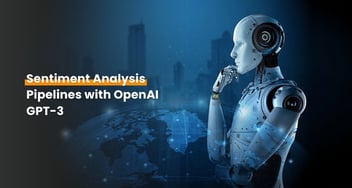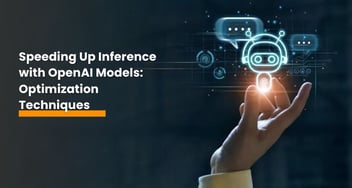Integrating Robotics Process Automation with OpenAI Language Models
Explore how OpenAI Language Models, like GPT-3.5, enhance Robotics Process Automation (RPA). Learn integration steps, use cases in customer support, translation, content generation, and data analysis, boosting efficiency and productivity. Use responsibly for business automation.
%20with%20OpenAI%20Language%20Models.png?width=670&height=445&name=Robotics%20Process%20Automation%20(RPA)%20with%20OpenAI%20Language%20Models.png)
Robotics Process Automation (RPA) is a technology that enables businesses to automate repetitive, rule-based tasks using software robots. These robots can perform tasks with high accuracy and efficiency, freeing up human workers to focus on more complex and creative endeavors.
OpenAI's Language Models, particularly the GPT-3.5 architecture, can play a pivotal role in enhancing Robotic Process Automation by providing advanced natural language processing capabilities.
In this article, we'll explore how OpenAI's language models can be integrated into RPA workflows to perform tasks that require a deep understanding of human language.
Understanding OpenAI Language Models
OpenAI's language models are powered by deep learning algorithms that can generate human-like text based on the provided input. GPT-3.5, in particular, is highly advanced and versatile, capable of tasks ranging from translation to summarization and even creative writing.
Integrating OpenAI Language Models with RPA
Step 1: Setting Up OpenAI API Access
To get started, you'll need to sign up for access to the OpenAI API. Once approved, you'll receive an API key that you can use to interact with the models.
Step 2: Installing the OpenAI Python Package
You can use the OpenAI Python package to integrate the language model into your RPA workflow. Install it using pip:
Step 3: Using the OpenAI Language Model in RPA
Example 1: Language Translation
Example 2: Summarizing Text
Use Cases for RPA with OpenAI Language Models
1. Customer Support Automation
By integrating OpenAI's language models, RPA bots can effectively handle customer queries and provide accurate responses in real-time.
Related Read: How Robotic Process Automation Is Leveling Up Customer Satisfaction
2. Language Translation
Automating the translation of documents or messages between different languages can greatly enhance global communication within an organization.
3. Content Generation
RPA bots can use OpenAI models to generate marketing copy, reports, or any other form of written content.
4. Data Extraction and Analysis
Language models can be used to extract relevant information from unstructured text, enabling RPA bots to process and analyze data more effectively.
Conclusion
Integrating OpenAI's language models with RPA opens up a world of possibilities for automating tasks that require a deep understanding of human language. By leveraging the power of these models, businesses can achieve higher levels of efficiency and productivity in their operations.
Remember to use these technologies responsibly and ensure compliance with OpenAI's usage policies. With the right approach, RPA with OpenAI Language Models can revolutionize the way businesses automate their processes.


%201-1.webp?width=148&height=74&name=our%20work%20(2)%201-1.webp)


.png?width=344&height=101&name=Mask%20group%20(5).png)
















